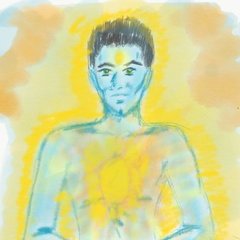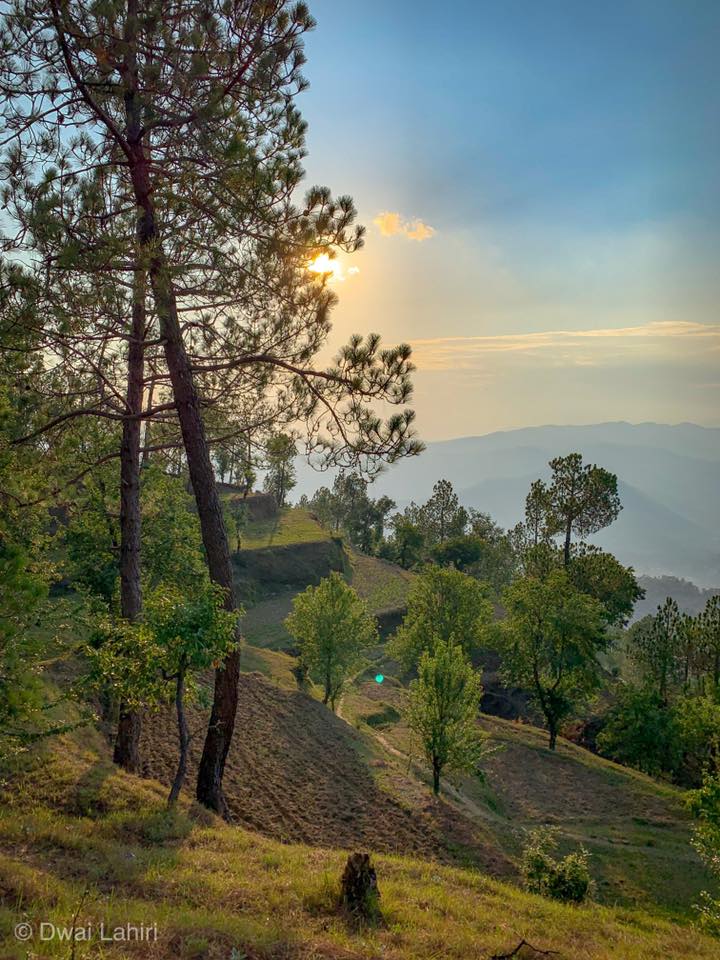-
Content count
8,286 -
Joined
-
Last visited
-
Days Won
70
Everything posted by dwai
-
I find all discussions keep coming back to a fundamental difference in opinion/understanding of how words are used. What does “suffering” mean? Is all pain suffering? If not, what pain constitutes suffering and what doesn’t? What separates pain from suffering?
-
Suffering as I am viewing it is a very specific mental phenomenon, that entails resistance to any "change" in the status quo. Yes, terrible things happen due to wars, famines, pandemics, etc. But whether someone "suffers" or not is dependent on their frame of mind. Suffering is a psychological phenomenon. Pain, illness, poverty, etc are terrible things, some inflicted by nature, other by circumstances while others by members of the society. I'm not trying to dismiss others' suffering as unimportant or insignificant. Rather, I'm suggesting that for the majority of humanity (outside of things like wars, famines, etc) it is a self-inflicted problem of the mind.
-
Suffering occurs due to our resistance to circumstances/happenings. There is no "purpose" for suffering - it is entirely self-inflicted.
-
Pretty much anyone who connects the daoist internal martial arts with spiritual daoism. Imho this is how it works for IMA practitioners — level 1 - connecting full body mass with release of power (all the physicalists will stop here). level 2 - mobilizing internal fluid power through the fascial web. This is a mechanical exercise one can develop learning to relax/release tension in the body to tap into the fascial web’s elastic mechanism. level 3 - learning to apply the yin/yang interplay at the weiqi field level. There is the recognition of the field beyond the physical body (aka subtle body). This is where things get interesting. level 4 - the “surface” field. This is where the awareness of the larger field of energy beyond the “individual field” arises. This naturally leads to the realization of the oneness of all material as a field of energy, arising from the interplay of yin and yang. Here there is no self. Only harmonizing with the field. level 5 - this is when realization that there neither “self” nor “other”, only the field/dao. The individual and the dao are non-different. Such people will never be in opposition to anything/anyone/any circumstance. This is the nondual level. Add a good set of wisdom teachings to this mix and nondual realization will happen faster. The problem is that most people are skeptical that such a thing could ever happen. Of those that are not entirely skeptical, most cannot dedicate themselves to the practice long enough to get to the next stage. Of those that do, for most, their own conditioning blocks them. For a rare few, they can trust their teacher and their intuition enough to persevere. Such people will come across a genuine teacher who can show them the next level, and so on. The reason why these paths are so difficult is not because they hide some complex secrets and methods, but because people don’t develop enough self introspection and awareness to get out of their own ways usually. Doubts, uncertainty, fear, prejudice, all result of prior conditioning get in the way.
-
Depends on whether you want the outcome or the cause. FWIW, “fajin” is only a gate which once entered through, will unlock “nondual” realization by preparing the mind (and consequently the subtle body). Once the mind is ready and subjected to the right knowledge, nondual realization will arise like a ripe fruit drops from the branch.
-
very insightful points. I find that there’s a deep relaxation and the system gravitates towards things/activities that don’t disturb the relaxation/equilibrium. These translate to physical and psychological things/patterns etc. Aw c’mon buddy. I’d only give you friendly hug (er…non-controversial kind, not the non-physical level stuff), buy you a beer, and want to chat with you
-

Sadhguru on the cause of violence and its solution
dwai replied to Ajay0's topic in General Discussion
I think it depends on what is being taught. The foundational stuff is not very expensive. Also, what they collect from paying students is used to fund many of their charitable initiatives. Those who can afford, should do so. If it doesn’t transform them, they’ll be wiser from it and not spend the money next time. Volunteer work is often treated as a spiritual practice (selfless service or nishkama karma). How is one to know if some of the volunteers are being coerced? Maybe they are not — maybe they truly subscribe to the vision of the org they’re part of and volunteer? That is murky for sure. But his capabilities are empirically verifiable. In a culture (Hindu ie) where karma plays a huge role, such Janma-Siddhas (born with siddhis) are not unusual - the entire avadhuta tradition is full of such individuals. Fwiw, Your criticism is neither new, nor does it bring any new perspective to the front. one of the reasons he is vilified is because he poses a huge threat to the spread of abrahamic religions. Gurus such as Sadhguru, Sri Sri Ravi Shankar, Amma act as a layer of firewall protection for Indic civilization/culture. That is apart from the fact that their teachings and methods are easily usable and very useful. -
Wrt the topic of “wholeness” - it is misunderstood imho. Wholeness wrt the atman/Brahman implies completeness or fullness. It is never incomplete, or deficient, so there is no “need” or “want” associated with it. This fullness (or completeness , aka purnam) is another way to consider its nature as “existence” or “being” (Sat). The completeness is also wrt awareness - chit (it is awareness itself, because without it, how can it be complete?). This so all wrt peace/joy - ananda (because being existence itself, and awareness itself, it is also peace/love/joy itself. Thus from it come the qualities of love, peace, goodness, joy. What we experience as pain, sorrow, misery, chaos in the dualistic sense is due to the obscuration or “apparent deficiency” (in the mind) of our true nature. Realize the true nature and there is no longer any deficiency, hence what is, is “fullness”. That is not to say that the nondual seeker wants “wholeness”. That is rather the only quest (whether they know it or not) of every person who thinks of themselves as dualistic beings. That’s why people chase after pleasure/happiness/wealth, etc, shun pain/sorrow/misery etc. This path of seeking (more/better) is called the path of pravritti (or multiplication). That was the path of the “normal” person. They would uphold the “good”, shun/avoid the “bad” and progress up the spiritual ladder one life at a time. The path that nondual schools teach is that of reduction (nivritti). So one doesn’t seek to fulfill whatever is deficient by acquiring more. It is done by letting go, at more level than one. Letting go of me/mine, letting go of “us and them”. Letting go of identifixation (on personality). With this letting go, comes a falling “inward”, from the object-enthralled sensory mind to a mind that is falling into progressively deeper layers of stillness and clarity.
-

Sadhguru on the cause of violence and its solution
dwai replied to Ajay0's topic in General Discussion
I can tell that he is powerful spiritually - in terms of transmission and it’s power to transform. He is very highly regarded by seasoned people I know. Usually those who dislike him are either those who aren’t able to resonate with what he says (mostly good stuff), or those who are threatened by him. He has consecrated some really powerful artifacts such as the dhyanalinga in his main facility in coimbatore (in India). The dhyanalinga makes even novices be able to enter deep stillness and meditate. A friend of mine who is very advanced told me he went there to sit for 5 mins and 10 hrs later they had to carry him out because he’d entered samadhi as soon as sat down in front of it. -
Patanjali’s way is the 8-fold one. Yama, Niyama, asana, pranayama, pratyahara, dharana, dhyana culminating into samadhi. Swami Krishnananda’s way is Advaita Vedanta primarily, so for that there is the path of Jnana yoga - learn the correct view, contemplate on the view and assimilate it so that it becomes a lived reality.
-
Some of the bouncing/hopping can be explained by taiji people holding structure while getting power transferred on them. With inexperienced people it is usually one hop and then running backwards to maintain balance (or falling to the ground). Not everything is as it looks. FWIW I’ve not met mizner, but what is being taught is not simply biomechanics. I used to think he’s a bit of an arrogant “Richard cranium” too based on his online persona. But doesn’t take anything away about his art. How do I know that his stuff is legit? Because I see a lot of what I have learned, practice and teach in their videos. We have different ways to actualize it (conceptual frameworks might be different), but effects are similar. If someone has done taijiquan for even 6 weeks, and not felt qi flow then it’s a tragic shame and they should ask for their money back and then some. Qi is real, and it doesn’t take years to feel and recognize. Depending on how blocked one is, if doing the rigth thing, it will become apparent in a few weeks at most. With time it becomes stronger as the kinks are cleared up with regular and proper practice. Here’s one of explanation for why this stuff works (and it’s not about lines of force, biomechanics etc) —
-
He’s referring to the subject-object duality that gets reinforced with focus on an “object” as I understand it. The reflected consciousness (the mind) includes the ego which applies labels and identities. So the seer who experiences, the doer who does, applies the separation of “subject and object”, “doer and doing”, and so on. This is what is being referred to here.
-
We’ve put the “Jeff issue” to rest a long time ago on this forum. Best to not animate ghosts of the past.
-
I agree. That was my experience as well. In fact I’ve never seen him be rude or unkind to anyone in a public forum, nor criticize anyone in 1:1 interactions I’ve had with him. Moreover, Jeff and I have publicly debated and disagreed (without an iota of acrimony may I add) on many things, both before I started to work with him as well as after. At the same time, I don’t dismiss anyone else’s (unpleasant) experiences as a result of working with him. These things are subjective after all.
-
I opted out of that entire add-on feature. I think fine print detail was that it was entirely optional, and completely unnecessary.
-
so you want to have your cake and eat it too. We knew that already I wish people who gravitate towards yogic practices would spend sufficient time reading Patanjali’s yoga sutras. All misconceptions about “siddhis” will disappear if there is respect for the tradition. The third section of the YS is called the “vibhuti pada” and covers the topic of siddhis. I’m sharing a specific chapter from a commentary on the YS by swami krishnananda below
-
I had an open mind and explored with him and his system. Many on this board did. I found it quite interesting. I found Jeff to be a bright person and had good insights into things. What I didn’t agree on with him I did so publicly on this forum. But I gave his way a fair and open-minded shot.
-
Sri Ramakrishna Paramahamsa referred to two categories of Maya acting on an individual. Avidya Maya and vidya Maya. Mostly people are under the influence of avidya Maya (thus leading to further embroilment into samsara). This has to be transformed into vidya Maya (seeker’s mind, strong dispassion for the worldly things, and strong desire for liberation). Under the influence of vidya Maya, liberation becomes possible.
-
The neophyte’s mind is like a dog’s tail. For a while during explaining nonduality to a beginner, the beginner’s mind refuses to snap out of the tendency to embroil itself into the world of objects. Every time you try to bring their mind to the subject-object distinction perspective, it snaps back to being embroiled in the world of objects. If we can find someone who has the ability to maintain focus on the subject-object duality distinction, they are well on their way to nondual understanding. I propose 4 “degrees” of presentness — a part of the world, deeply entwined, unable to separate out self from the world with clarity or consistency. apart from the world, as subject separate from the objects No “real” world, only appearances in awareness Awareness as Self, in which the world an appearance. Awareness experiencing itself as the world.
-
I think it’s disingenuous to try and turn all the wisdom that stirling shared into caricature simply because you can’t understand what is being said. I mean, you CAN understand the words, but not what they really mean. In the vedanta tradition it referred to as “vacya artha” (literal meaning) and “lakshya artha” (deeper meaning). What immature people see is the literal meaning. Those with some maturity can see beyond the literal words. Something that is quite apropos to this entire discussion might be as follows — It’s like someone without proper context won’t really know what “cumin seed in a camel’s mouth” means. It literally means something, and it’s intended to mean something else at a much deeper level. I think many of the deeper truths that have been pointed to have had the same effect as a cumin seed in a camel’s mouth.
-

What is behind the compulsion to be correct? Ego?
dwai replied to natural's topic in General Discussion
Birds do it bees do it .., -
Both the nāstika and āstika traditions are considered part of sanātana dharma.
-

"When the student is ready, the master appears"
dwai replied to looschmaster's topic in General Discussion
It is so in my experience. Multiple times. I also found this works best if we dedicate ourselves to a singular practice/tradition with reverence and sincerity. If we have a sense of entitlement and keep hopping from one system to another, we’ll most likely never have the good fortune of being ready for our teacher to appear in our lives. -
The Hindu-Buddhist “divide” historically was merely a philosophical one, especially with the dualistic traditions. In practice Hindus and Buddhists quite happily coexist in India. Near my hometown in India is a large Tibetan Buddhist settlement and monastery. The Tibetan government in exile, and people have been welcomed into India with open arms by the Hindus. The Tibetan people including HHTDL have been grateful and gracious guests, and valuable members of civil society. HHDL has been a guest of honor in many very serious Hindu summits and events, and he has happily participated. What most Westerners who study Buddhism (in neophyte or intermediate stages) learn about the “conflict” with Hinduism is a concoction of western academia. There is no real conflict imho. As far as knowledge/systems go, imho Advaita Vedanta, KS, Vajrayana Buddhism, and nondual daoism are at par and effectively point to the same fundamental reality. Only colored in different language and cultural context.
-
Teal’c is the best, after Sam carter






